Malaysia Diving
Malaysia Dive Regions
- Peninsular Malaysia
- Malaysian Borneo
Malaysia Diving
Peninsular Malaysia
Pulau Langkawi
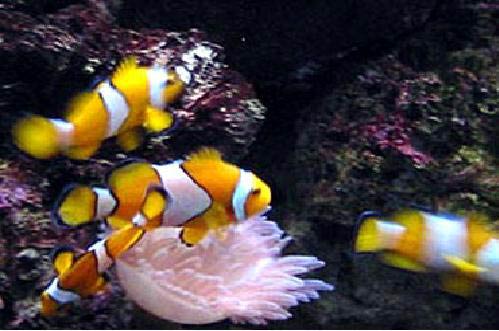
Although there are several dive operators on Langkawi most of the diving is done ...

Although there are several dive operators on Langkawi most of the diving is done further south at Pulau Payar. There are four islands in this marine park some 30 kilometers south of Langkawi. It boasts the largest number of coral species in the country and the most vividly coloured soft corals. Visibility isn't as good on average as other areas in Malaysia, but this is made up for by the abundance of marine life. There is a large pontoon and underwater observation chamber here where vessels laden with day trippers from Langkawi moor up.
Pulau Payar dive sites
The southwestern tip of Pulau Payar offers a panoramic coral garden with steep canyons and crevices dropping down to around 18 meters. Marine life includes titan triggers, morays, lionfish and pufferfish. A litter further south is "Grouper Farm" named after the large number of resident groupers, viz is usually slightly lower here. Other popular dive sites around Payar are Lobster Garden, Porite Garden and Raaf Beach. There are a couple of spots around Pulau Lembu including Lembu Rocks and Goodyear Reef.
Pulau Kaca dive sites
South of the island is an artificial reef made up of seven sunken confiscated fishing boats. The wrecks are home to a wide variety of fishlife including jacks, mangrove snappers and groupers. Navigation is relatively simple and none of the wrecks lie deeper than 18 meters.
Pulau Segantang dive sites
This small island lies 13 kilometers west of Pulau Payar, it features steep rocky terrain down to 20 meters. Fish life is in abundance with barracuda, jacks, snappers and often nurse sharks. Tyre Reef is the most popular site here, there is also an anemone garden round the northern side of Segantang.
Pulau Jarak
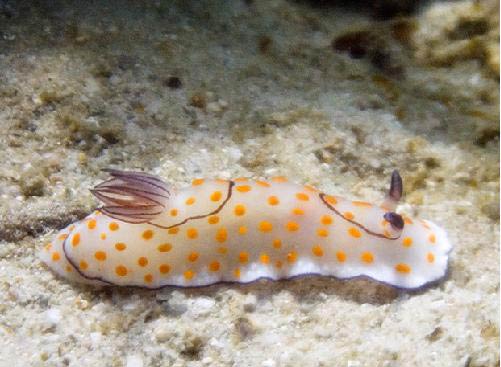
Pulau Jarak is located 32 km southwest of Pulau Pangkor off the town of ...

Pulau Jarak is located 32 km southwest of Pulau Pangkor off the town of Lumut in Perak. This tiny island rises 50m above sea level and is covered with lush green vegetation. On top of it is a lighthouse. There are no accommodations on the island and as such it is lesser known to many but has been a favorite destination to local anglers. It is rich with marine life and famous for its pelagic fishers such as barracuda, jacks and king sailfish. In fact it is a common sight to see the king sailfish doing their acrobatic dance on the surface of the water most evenings.
Usually when the diving season in East Coast islands wind down from November to March local divers will head for Pulau Jarak. Due to its location right in the middle of the Straits of Melaka it has one of the best water visibilities among the islands on the West Coast. Pulau Jarak in Malay literally means distant island, and come monsoon season the lure of this island beckons divers who arrive on their live-aboard dive boats.
Hard corals dominate the seascape with several large boulders carpeted with sponges. Parrotfish, humphead wrasse, king size lion fish, turtles and giant moral eel are among the many fish that can be seen here.
Pulau Lang Tengah
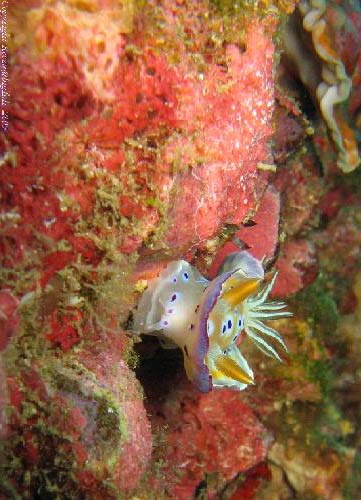
Pulau Lang Tengah lies in the middle of Malaysia's foremost Marine Park sanctuary, ...

Pulau Lang Tengah lies in the middle of Malaysia's foremost Marine Park sanctuary, where living corals and endangered species of marine life are protected. Its coast is nature's well-kept secret. Untroubled surroundings conceal with clear water, pristine beaches and untouched tropical jungle. Pulau Pulau Lang Tengah is located between Pulau Redang and Pulau Perhentian. The clear emerald waters and the coral reefs around it are popular with scuba divers and snorkelers. Pulau Lang Tengah Island , itself, is covered by hilly tropical rainforest, which offers varied flora and fauna for those willing to trek through the island.
Pulau Lang Tengah has a number of dive sites. Among the more popular ones are Tanjung Nibong Laut (26m), Yellow Reef (Terumbu Kuning, 25m), Tanjung Telunjuk, Karang Nibong, Batu Bulan and the house reefs.
Pulau Tenggol
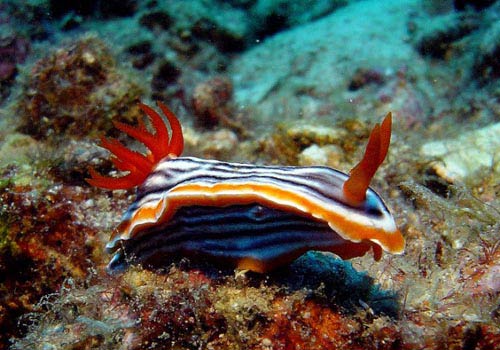
The Tenggol group of islands one of the best diving, is the most southerly of ...

The Tenggol group of islands one of the best diving, is the most southerly of Terengganu's Marine Parks. It consists of Pulau Tenggol, Pulau Nyireh (Nyireh Island), Tokong Timur, Tokong Talang, Tokong Burung and Tokong Kemudi.
The main island, Pulau Tenggol, is about 50ha in size and is one of the most beautiful and serene islands off Peninsular Malaysia's east coast. It is also famous for its spectacular rocky cliffs that offer many excellent dive sites. Here, one can find pristine coral formations and a number of submerged rocks with excellent coral growths. The deep waters surrounding the island offer good visibility especially during the months of April until June. Marine life that can be seen here includes sharks, rays, nudibranch and a wide variety of hard and soft coral.
Favorite Dives: Tokong Air Tawar, a well sheltered bay is excellent for checkout dives and night dives from the shore. Depth gradually increases down the gentle slope to about 20 meters. Hard corals dominate the terrain with sporadic soft corals adding a touch of color to the monochromatic seascape. Shy garden eels can be observed towards the right of the bay at about 10 meters depth on the sandy bottom.
Batu Tokong Laut. One of the more popular sites for advance divers seeking out schools of fish. Located in the open sea, the boulder-like terrain features interesting swim through tunnels and crevices for divers to explore. Some of the fish sighted include batfish, fusiliers, jacks and kingfish.
Batu Tokong Kamudi. Extending down to slightly more than 30 meters, the seascape has a good mix of hard and soft corals. Christmas tree worms carpet the face of porite mounds. Except to see lots of sea anemone, nudibranchs, butterflyfish, wrasses, parrotfish and large snappers.
Pulau Perhentian
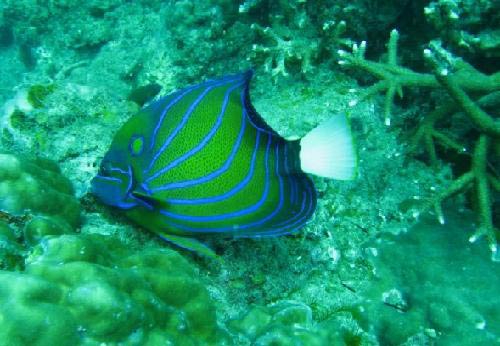
Diving in Perhentian can be both relaxing and challenging, depending on your preference. Perhentian ...

Diving in Perhentian can be both relaxing and challenging, depending on your preference. Perhentian offers diverse diving condition, including many dive sites with depths no more than 12 meters, calm seas to 30 meters, drop wall dives at Tokong Laut, drift dives at Susu Dara and Tokong Bopeng, and cavern dives at Terumbu Tiga. Perhentian will keep even the most discerning divers satiated.
The dive sites surrounding Pulau Perhentian are blessed with a variety of hard and soft corals such as gorgonions, sea fans, black corals, staghorns, hydroids and harp corals. Marine life is no less spectacular. You can expect to see schools of yellowtail barracuda, variety of fusiliers, butterfly fish, sweetlips, harlequin ghost pipefish, damsel fish, surgeonfish, intriguing Titan triggerfish and shy hawksbill turtles, white-tip, black-tip and nurse sharks! Muck diving enthusiasts will not be disappointed. Many invertebrates and small critters can be easily found.
Visibility can reach up to 30 meters during the dry season of July to September. Average visibility of around 15-20 meters are enough reason to make Perhentian one of the world's best dive destinations.
Pulau Redang
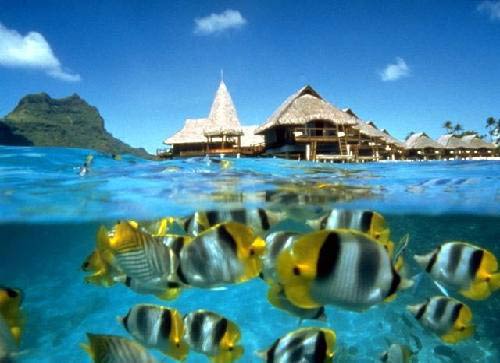
Redang Island together with its 8 neighboring islands Lima Island Paku Besar ...

Redang Island together with its 8 neighboring islands ( Lima Island , Paku Besar Island , Paku Kecil Island , Kerengga Besar Island , Kerengga Kecil Island, Ekor Tebu Island , Ling Island , Pinang Island ) are known as the Asian paradise in the South China Sea. Being the main island of the Archipelago, Redang Island offers nature lovers an adventure holiday to get away and relax in the solitude and serene beauty of our tropical isles. Nature is at its best here -- fresh air, gleaming soft white sand and crystal clear water. The reefs of Redang provide a substrate for hosts of other organisms such as algae, sponges, worms, mollusks, crustaceans, etc.
All these organisms contribute to the ecology of the reef. The reef also provides major breeding, nursery and feeding grounds for many species of fish and other animals, while the beaches offer nesting sites for the hawkbill turtle (Eretmochelys imbricata) and the endangered green turtle (Chelonia mydas).
Pulau Sembilan
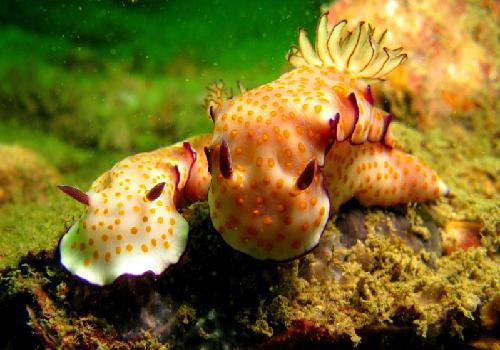
Situated 10 nautical miles south of Pulau Pangkor is Pulau Sembilan. A cluster of ...

Situated 10 nautical miles south of Pulau Pangkor is Pulau Sembilan. A cluster of nine small islands, the Sembilan Group includes Pulau Agas, Pulau Payong, Pulau Nipis, Pulau Rumbia, Pulau Lalang, Pulau Saga, Pulau Buluh, Black Rock and White Rock. Secluded and uninhabited, the islands are usually popular with campers on weekends and public holidays, especially between the months of November and March. The nicest island in the group is Pulau Lalang, which has a fresh water stream and a beach for camping.
The most popular snorkelling and dive spots are around the channel between Pulau Rumbia and Pulau Lalang. The area is about 15 metres deep and has a sandy bottom with scattered coral heads. The hard coral growth supports a number of fish, predominantly groupers, snappers and barracudas.
Pulau Payong is a good location for novice diver as there are many good corals around 30ft and diving towards the edge you might get to see some fishing cages tied to the rocks at 40 - 60ft. In the cages you might find some really huge grouper or snappers.
The channel between Pulau Buluh and Pulau Saga is another known site. It is strewn with big boulders, and at depths of 10 metres and below are green tree coral. The area is also known as grouper country to spearfishermen. The eastern side of Pulau Buluh has small rocks, hard corals and coral fish.
White Rock is also known for diving. Being in the open sea, jacks and barracudas are commonly seen here, and in the crevices of the coral and rocky substrate are found many large groupers and snappers.
Pulau Sembilan is about 3 hours from from Kuala Lumpur. But because of limited visibility, other places in Malaysia are recommended.
Pulau Tioman
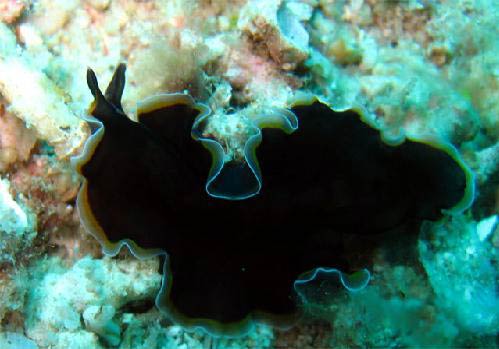
Tioman, Pahang is the biggest island among the 64 volcanic islands. It has become ...

Tioman, Pahang is the biggest island among the 64 volcanic islands. It has become one of the most popular spot for those who like to catch the sound of the soft tropical breeze and enjoy miles of beautiful white sandy beaches. It represents itself as a paradise island in the tropics. But sometimes you have to search for this paradise off the beaten track.
It was discovered as a holiday destination quite some time ago. As the setting for the supposedly mythical magical island of Bali Hai from the Hollywood movie 'South Pacific' in 1958. In the 70s the Time magazine selected Tioman as one of the world's most beautiful islands which blesses with miles and miles of soft white sand, swaying palms and cool waterfalls. According to the local legend, the mystical Tioman Island is the resting of a magical dragon princess who whilst flying from China to her beloved prince in Singapore , sought solace in the crystal waters of the South China Sea . She was so pleased with the surrounding charm, that she discontinued her journey, and search for happiness in order to give pleasure and comfort to weary passing seafarers as well as providing shelter and refreshment to fisherman by turning herself into this beautiful island.The island offers underwater adventure, snorkeling, windsurfing, and outdoor activities in a peaceful view with crystal clear water as far down as 35 meters. Pulau Tioman is a veritable garden of colorful marine life.
The shallow reefs of Pulau Tulai and Renggis are also popular spots for scuba diving and snorkeling. Divers can also explore the underwater caves around Pulau Chebeh and the incredibly beautiful reefs of Pulau Sepoi and Pulau Labas. On the northeast is the Tulai Island, which looks just like a bat with outstretched wings. The water around this island is unbelievably clear and like Tioman, is a beautiful marine park. Snorkeling, Scuba diving and underwater photography are the only activities allowed here. The 10-minute jungle trek to Rockfalls awards you with glimpses of monitor lizards and exotic butterflies in their natural environment.



